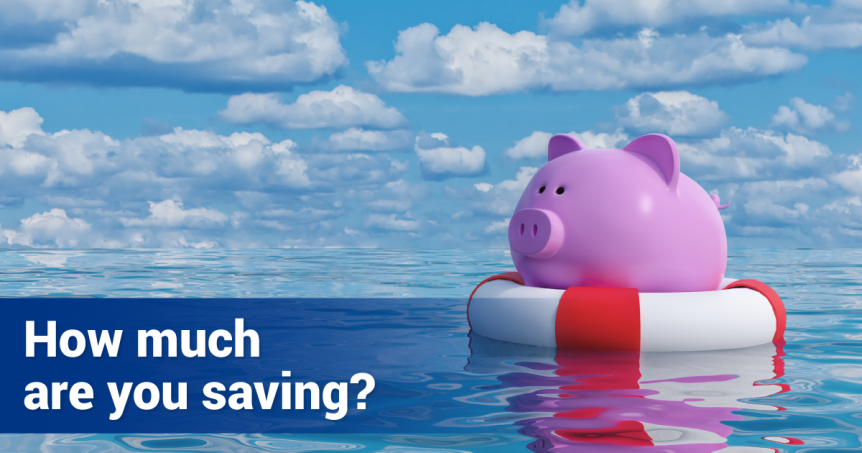Harold Wilson, former British Prime Minister joked, “I am an optimist, but I’m an optimist who carries a raincoat.”
You probably already have some cash stored away for the inevitable rainy day. Indeed, you should have savings for those one-time, non-recurring expenses that come up—a water heater replacement, a roof repair, the auto insurance deductible—but this savings should actually be separate from your emergency funds.
Why You Should Have an Emergency Fund in Retirement
It is critical, especially when preparing for retirement, to have an additional pot of funds for the financial storms that could potentially wreak havoc on your lifestyle.
Your emergency fund is a key component to the strong foundation of your financial plan. Having this money prevents you from otherwise racking up credit card debt, tapping into your retirement accounts, or selling off assets to pay your bills.
How Much Should You Save?
You should have twelve months of living expenses set aside in a safe, liquid savings account. Remember, the purpose of this money is not to earn money but to be there for you in a true emergency. Don’t take risk or give away liquidity for a little bit of profit. A savings account is your best bet, just remember to stay under the FDIC insurance limits at each bank.
It is important to calculate how much you will need in your emergency fund using your actual monthly expenses, not your monthly income. Different people earning the exact same salary may have vastly different monthly obligations.
For example, if you have no debt, no dependents, and live pretty frugally, you can probably allocate less toward this “bucket” and invest more of your money. On the other hand, if you have three children to support, along with a sizeable mortgage and credit card bills to cover, your emergency fund would be a bit more padded.
When to Use Your Emergency Fund
An emergency fund should only be used in the event of paycheck disruption or variances in portfolio income. When you are employed, this means that you should not draw your emergency funds unless you have suffered a job loss, an illness or disability that prevents you from working, the death of a spouse, leave of absence to care for an aging or sick family member, or any other circumstance that gravely affects your income.
Once you retire and begin living off your investments, the natural fluctuations in the economy and financial markets will create variations in your retirement income. Your emergency fund will make those fluctuations manageable. Cash is your most effective tool for smoothing out the effect of market volatility on your retirement income.
Your Emergency Fund and Market Fluctuations
Let’s say you need $4,000 a month from your portfolio to cover your living expenses in retirement. You have a $1 million portfolio that produces an average annual return of 7% over a long time horizon. That works out to $5,833 per month, before compounding.
In normal times, you would withdraw $4,000 a month from your portfolio, leaving the remaining $1,833 per month in earnings in the portfolio. The reinvested dollars create the growth you need to keep up with inflation.
Now imagine that the economy and the stock market take a tumble. Your investment returns, for some period of time, drop to $2,000 per month. What do you do? You do not sell off the assets at a loss. This is called eating your principal and it results in a very bad situation for retirees called reverse compounding.
Instead, you pull the $2,000 in earnings from your investment portfolio. You make up the difference, between the $4,000 per month you need and the $2,000 a month the portfolio is currently producing, using your emergency funds. That is what you have set them aside for. Being savvy and thoughtful about your money, you know that this sort of variance will, at times, occur.
After some period of time, the market begins to improve somewhat and your portfolio returns increase to $3,000 per month. Now you are supplementing your portfolio returns with only $1,000 per month from your emergency funds.
Eventually, because we do assume stock markets are mean reverting – meaning that they cannot exist indefinitely in a state of extreme– your portfolio returns come back in line with the expected rate of return for the portfolio. At that time, you are no longer supplementing your portfolio returns with your emergency funds.
The nature of mean reversion is that the pendulum swings both ways. So, just as we had a period of under-performance, we expect there will also be periods when the portfolio over-performs.
What about When the Market is Rising?
What do you do during these periods of boom? Do you spend the extra money on new cars and fancy vacations? No. You use those periods of time to replace what you took from your emergency funds so that when the next economic downturn occurs, you have sufficient reserves to smooth your portfolio income.
This system of managing portfolio variability in retirement is very easy and very effective. Likewise, you can more easily weather a temporary disruption in your salary during your working years with emergency funds as a buffer.
Planning, in almost any endeavor, is the key to success. It’s great that you have your raincoat and umbrella for the rainy day, but in the event of a flood, your emergency savings will be your ark.







